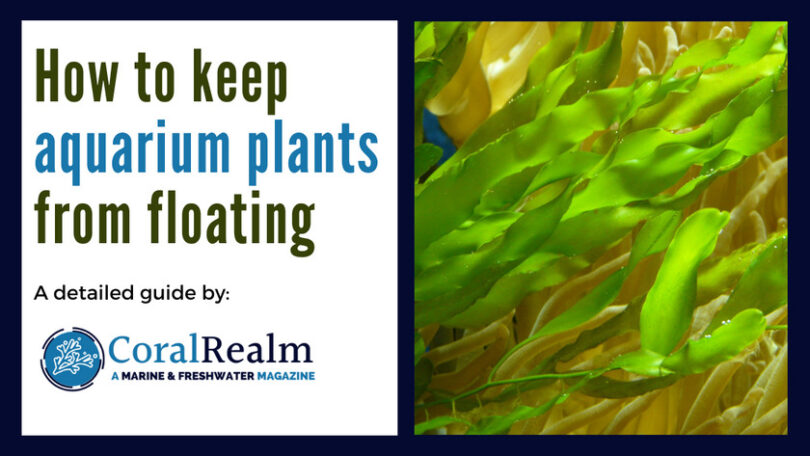Last Updated on February 12, 2023 by Jakob
How to keep aquarium plants from floating? Well, aquarium plants are a great addition to any aquarium as they provide both aesthetic appeal and numerous benefits to the aquatic environment. However, one of the common issues that aquarists face is that their plants tend to float around in the water, instead of staying rooted at the bottom of the tank. This can be a frustrating experience, especially if you have spent time and money to create a beautiful underwater garden.
In this article, we will discuss the reasons why aquarium plants float and provide several tips on how to keep aquarium plants from floating.
Why do Aquarium Plants Float?
- Light Intensity
One of the main reasons that plants float is because they are not getting enough light. When plants do not receive enough light, they will tend to grow towards the surface of the water in search of more light. This can cause the plants to become top heavy, which in turn makes them more prone to floating.
- Lack of Substrate
Another reason that plants float is because there is not enough substrate (gravel, sand, or soil) for the roots to anchor themselves in. This lack of substrate can cause the roots to become weak, making the plants more prone to floating.
- Overgrown Roots
Plants can also float if their roots have become overgrown and are taking up too much space in the substrate. This can make the plant top heavy and cause it to float to the surface.
- Poor Water Conditions
Poor water conditions can also cause plants to float. For example, if the water is too alkaline or acidic, it can cause the plants to become stunted and weak. Additionally, if the water contains high levels of nitrates or other pollutants, it can cause the roots to become weak and the plant to float.
Tips to Keep Aquarium Plants from Floating
- Provide Adequate Light
To prevent your plants from floating, it is important to provide them with enough light. The amount of light that your plants need will depend on the type of plants you have, but as a general rule, plants will need between 10-12 hours of light per day.
If you find that your plants are floating due to insufficient light, you can either move the tank to a brighter location or add additional lighting.
- Add Substrate
To help keep your plants anchored, it is important to have enough substrate in your aquarium. A substrate that is at least 2-3 inches deep will help to provide the roots with enough support.
If you find that your plants are floating due to a lack of substrate, you can simply add more substrate to your aquarium.
- Prune Overgrown Roots
If you find that your plants are floating due to overgrown roots, it is important to prune them back. To do this, simply remove the plant from the water and gently trim the roots back until they are no longer overgrown.
- Maintain Proper Water Conditions
It is also important to maintain proper water conditions in your aquarium to prevent your plants from floating. This includes keeping the water temperature within the proper range, maintaining the correct pH levels, and ensuring that the water is free of pollutants.
- Use Weights
If you are still having trouble keeping your plants anchored, you can try using weights. There are many different types of weights available, including lead weights, plastic weights, and even rocks. Simply place the weights on top of the roots of the plant to help keep it anchored.
In conclusion, floating plants are a common issue among aquarists, but they can be easily prevented with a little care and attention. By providing enough light, adding substrate, pruning, and clipping, you can keep aquarium plants from floating.
Useful content:
- Choosing the best floating aquarium plants for your tank
- Floating plants for aquarium – general guide.







